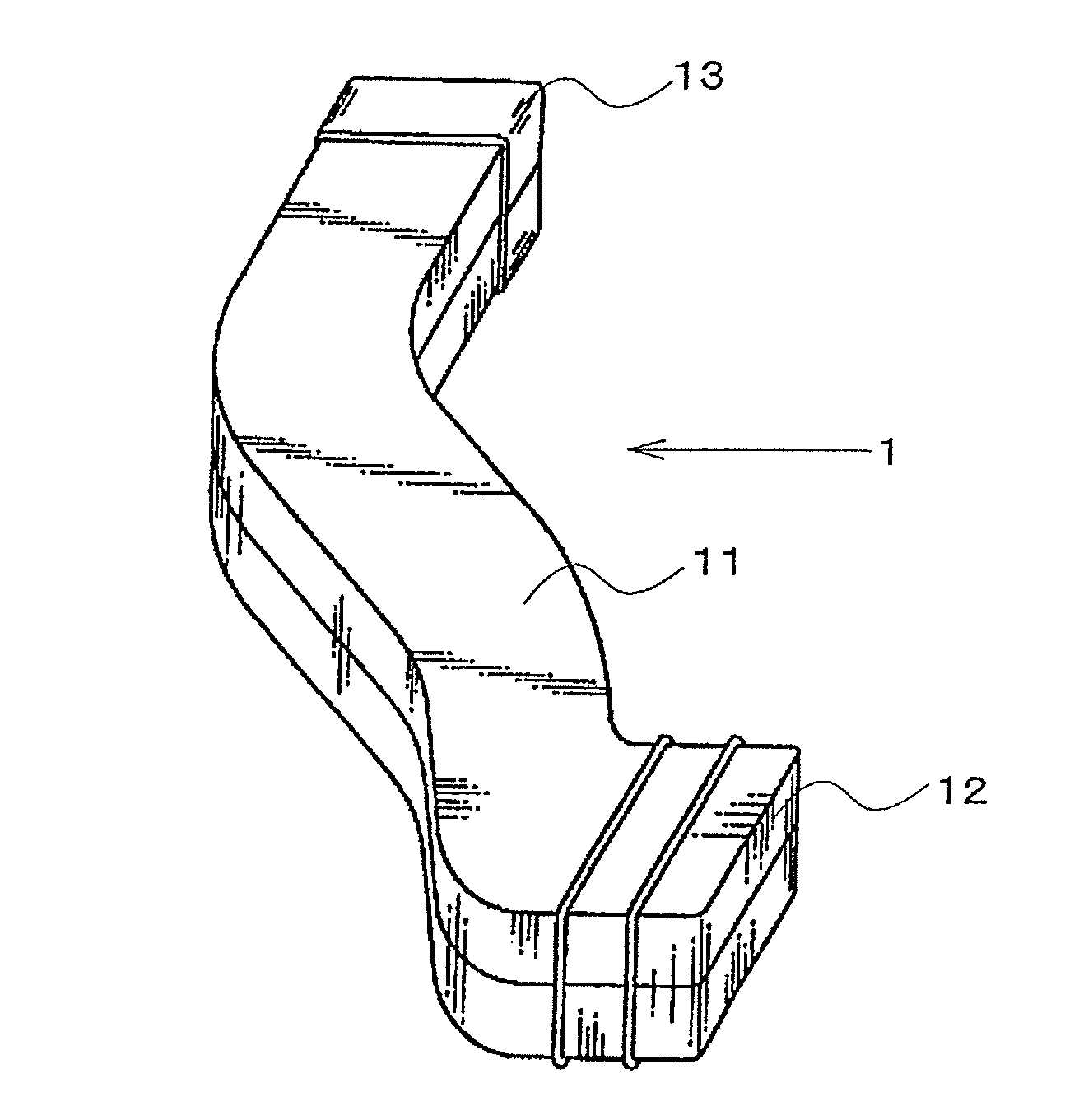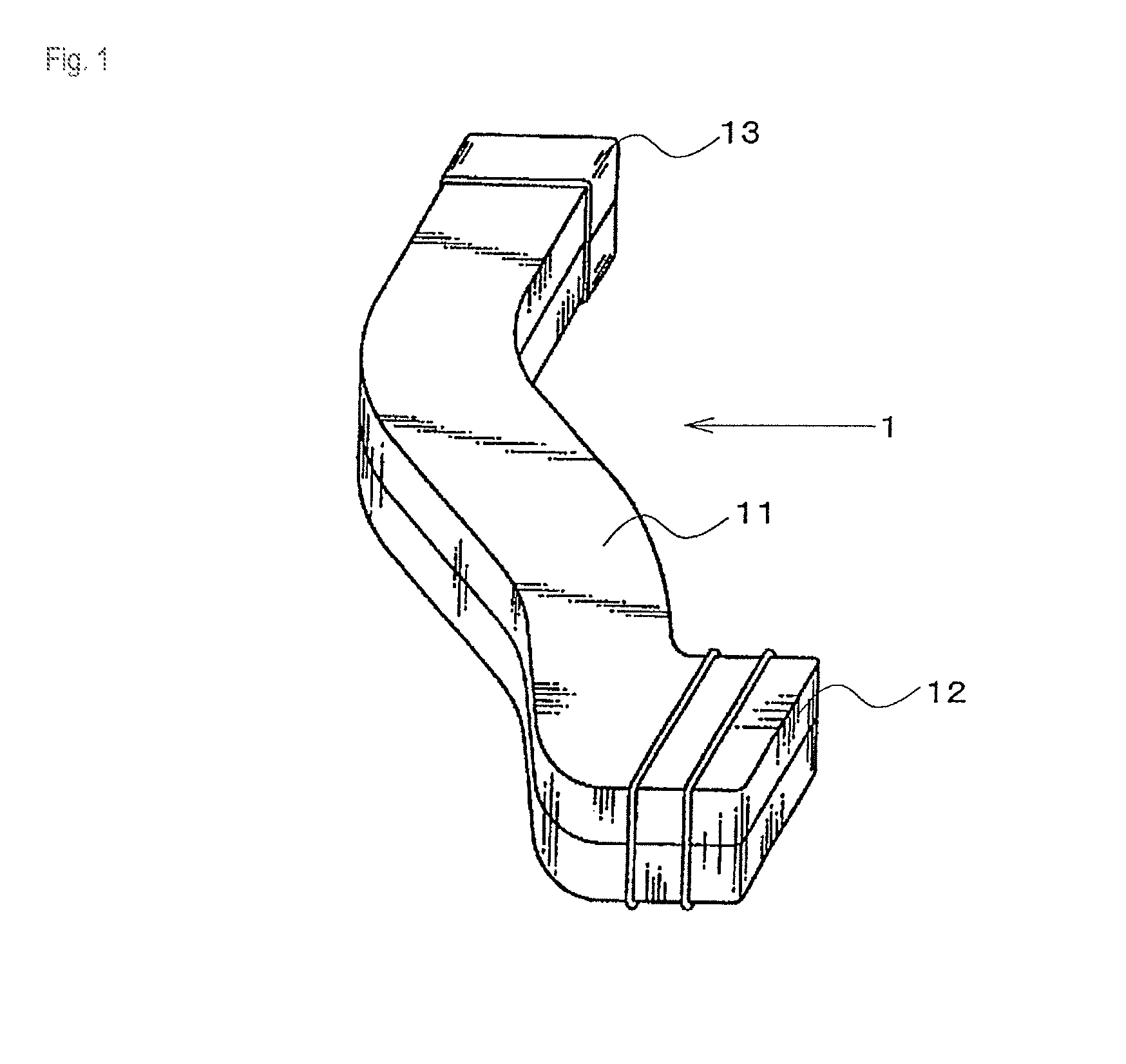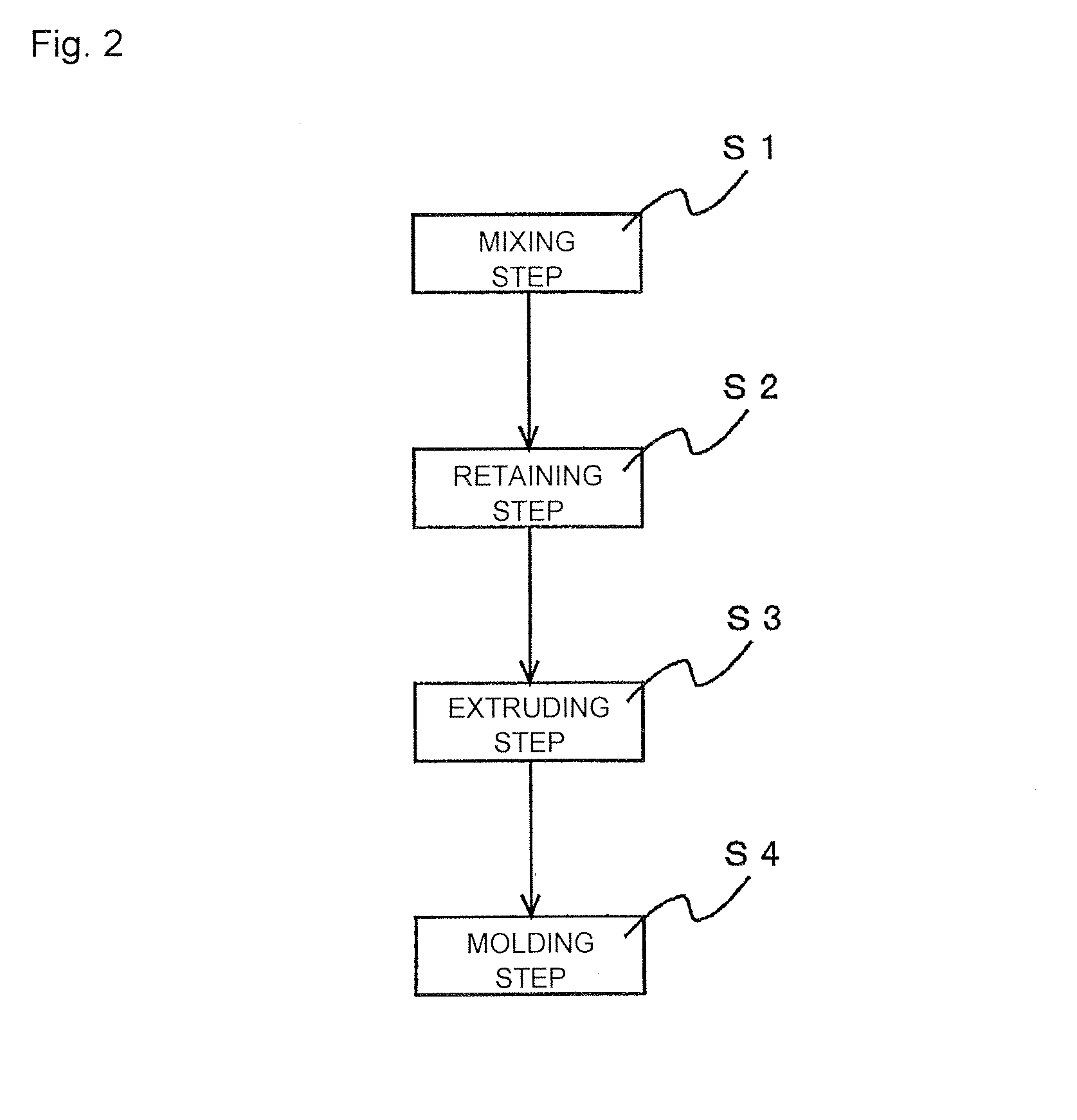Blow-molded foam and process for producing the same
a technology of blow-molded foam and process, which is applied in the direction of liquid handling, closures using stoppers, instruments, etc., can solve the problems that the foam duct cannot provide satisfactory smoothness on the surface, and achieve high surface smoothness, reduce the weight of the blow-molded foam, and reduce the friction resistance of flowing air
- Summary
- Abstract
- Description
- Claims
- Application Information
AI Technical Summary
Benefits of technology
Problems solved by technology
Method used
Image
Examples
first embodiment
(First Embodiment)
[0041]The following description is given about a case where a blow-molded foam according to a first embodiment of the present invention is used as a climate control duct.
[0042]FIG. 1 is a perspective view that illustrates the blow-molded foam according to the first embodiment of the present invention.
[0043]As illustrated in FIG. 1, the blow-molded foam 1 (hereinafter, also referred to as “climate control duct”) according to this embodiment has a wall portion formed in such a manner that a thermoplastic resin containing a foaming agent mixed therewith is subjected to blow molding. The climate control duct 1 includes a main body 11, an air inlet 13 formed at a first end of the main body 11, and an air outlet 12 formed at a second end of the main body 11. Details of the blow molding will be described later. Moreover, the air outlet 12 is opened by cutting a portion which is closed by post-processing after the blow molding.
[0044]The climate control duct 1 has a hollow ...
second embodiment
(Second Embodiment)
[0110]The following description is given about a structure in which the blow-molded foam according to the present invention is utilized as a skinned panel as a second embodiment of the present invention.
[0111]FIG. 5 is a perspective view that illustrates a blow-molded foam according to a second embodiment of the present invention.
[0112]As illustrated in FIG. 5, a blow-molded foam (hereinafter, referred to also as “skinned panel”) 3 according to this embodiment has a hollow structure with double walls, including wall portions that are formed in such a manner that a thermoplastic resin containing a foaming agent mixed therewith is subjected to blow molding. In this structure, a skin material 4 is bonded to one of surfaces of a base body 2 made of the wall portion. Such a skin material 4 is integrally bonded to the base body 2, simultaneously with the blow molding of the wall portion in the molding step.
[0113]FIG. 6 is a section view of the blow-molded foam illustrat...
example 1
[0122]A propylene homopolymer (thermoplastic resin: trade name: PF814, made by SunAllomer) (70 wt %) having an MFR of 3.0 g / min at 230° C., with a long-chain branched structure introduced therein, and a crystalline ethylene-propylene block copolymer (NOVATECH PP EC9, made by Japan Polychem) (30 wt %) having an MFR of 0.5 g / min at 230° C. were mixed to form a mixture, and 96 parts by weight of this mixture, 3 parts by weight of talc MB (master batch) serving as a core agent and 1 part by weight of black MB (master batch) serving as a colorant were mixed. The density of the resin mixture was 0.91 g / cm3.
[0123]To this was added carbon dioxide gas in a supercritical state as a foaming agent to be foamed so that a resin mixture was prepared. After having been mixed in an extruder, the resin mixture was retained at a cylinder-shaped space defined between a mandrel and a die outer cylinder by using an extrusion head illustrated in FIG. 3, and a cylinder-shaped parison was extruded between s...
PUM
| Property | Measurement | Unit |
|---|---|---|
| thickness | aaaaa | aaaaa |
| average cell diameter | aaaaa | aaaaa |
| surface roughness Ra | aaaaa | aaaaa |
Abstract
Description
Claims
Application Information
 Login to View More
Login to View More - R&D
- Intellectual Property
- Life Sciences
- Materials
- Tech Scout
- Unparalleled Data Quality
- Higher Quality Content
- 60% Fewer Hallucinations
Browse by: Latest US Patents, China's latest patents, Technical Efficacy Thesaurus, Application Domain, Technology Topic, Popular Technical Reports.
© 2025 PatSnap. All rights reserved.Legal|Privacy policy|Modern Slavery Act Transparency Statement|Sitemap|About US| Contact US: help@patsnap.com



